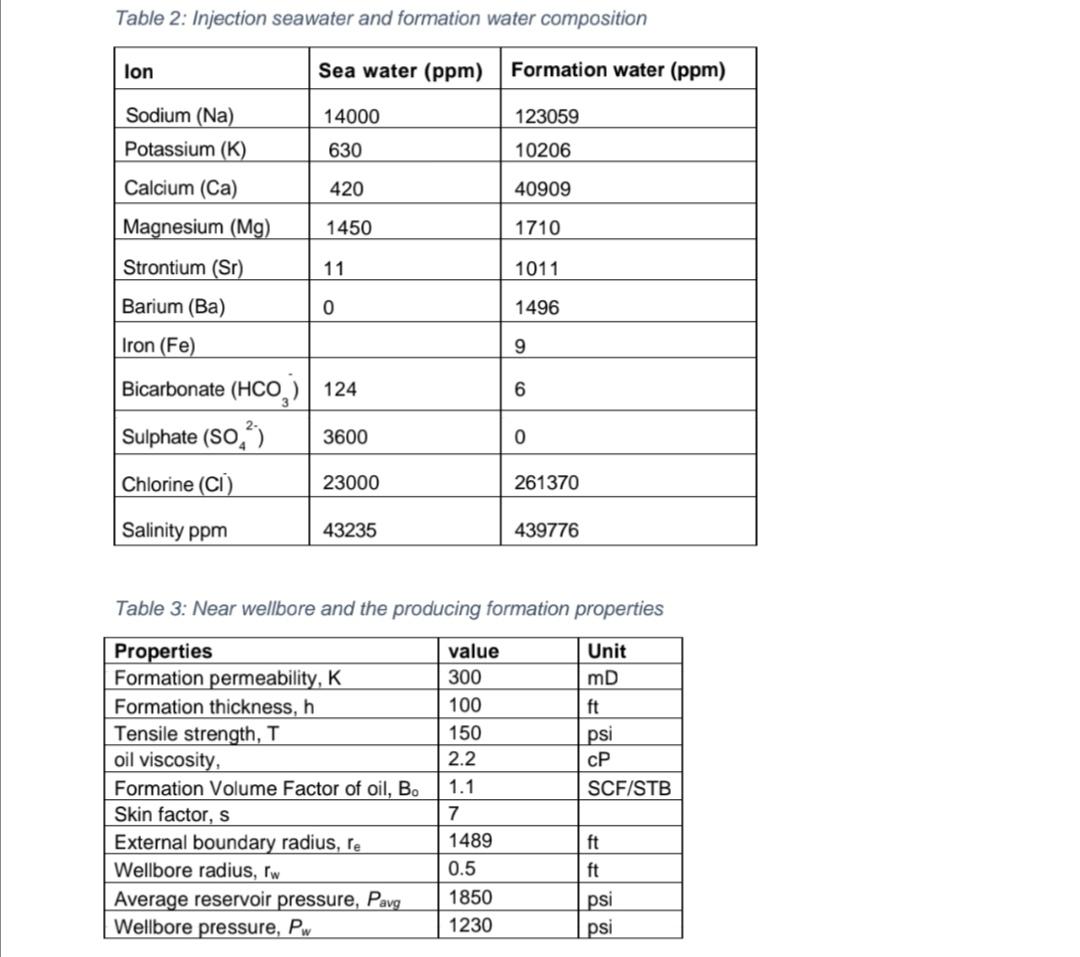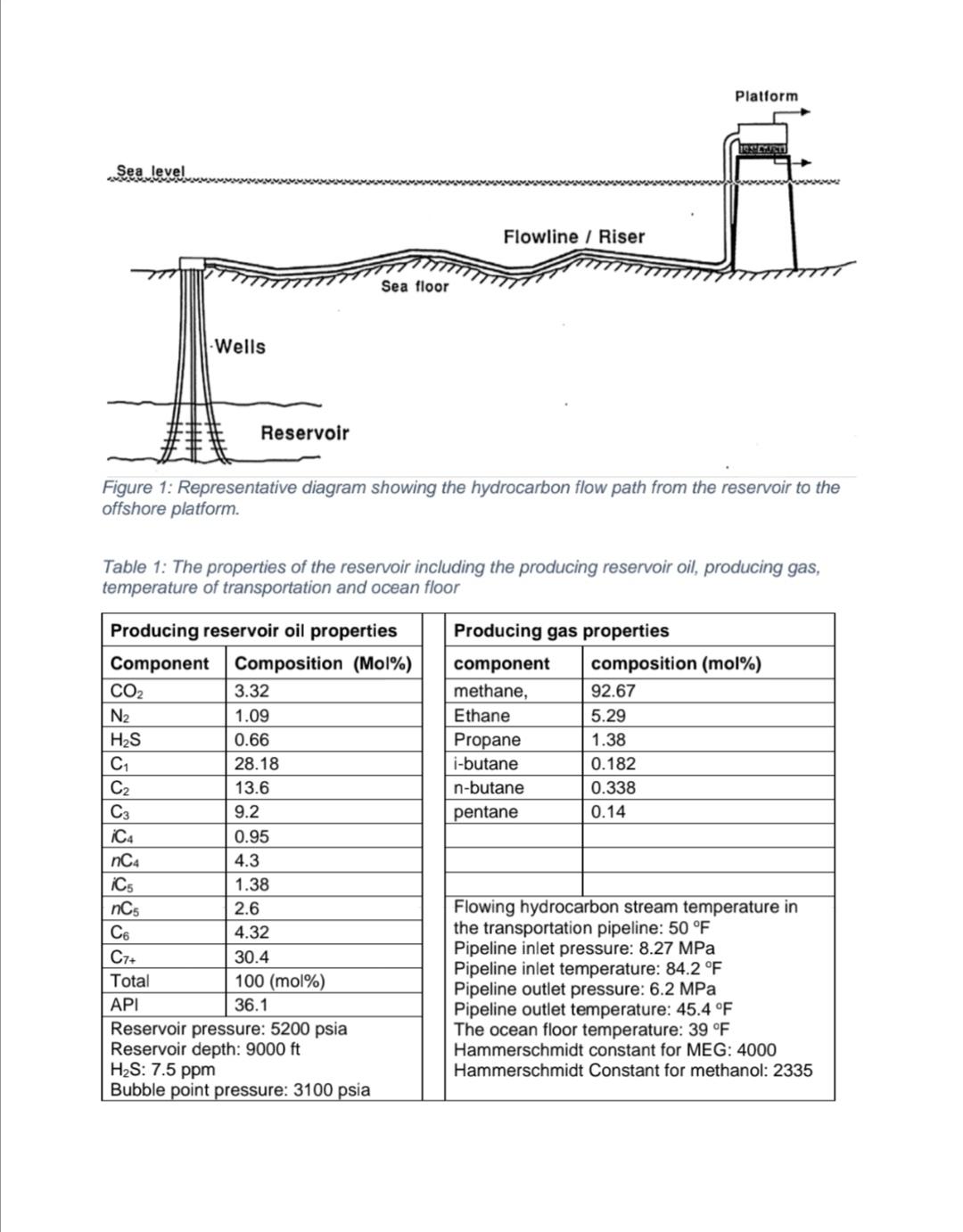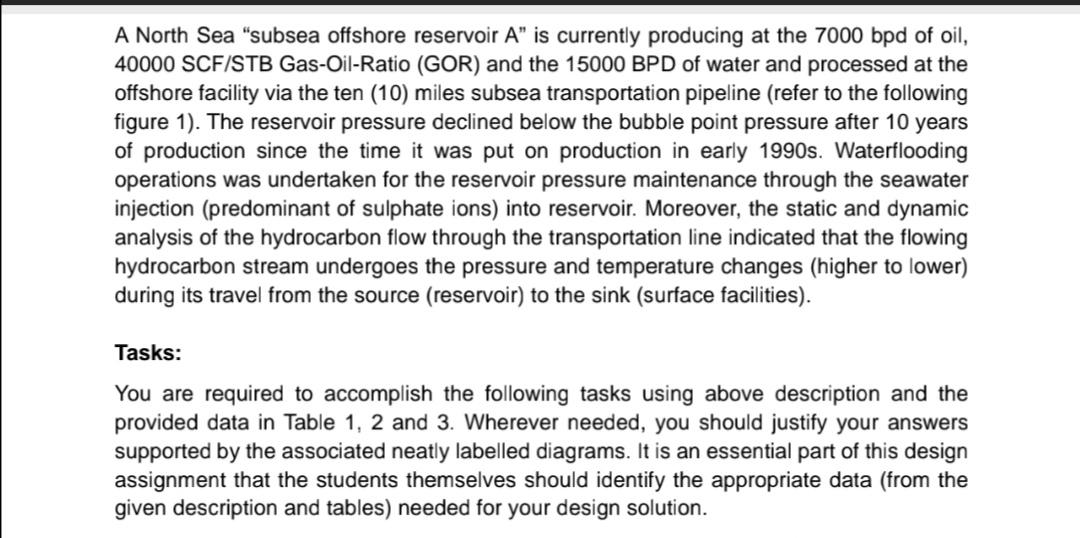Answered step by step
Verified Expert Solution
Question
1 Approved Answer
4. (a) Reservoir fluid contains CO2 and H2S. Critically analyse the types of corrosion possibilities with the help of supporting diagrams. (b) For the




4. (a) Reservoir fluid contains CO2 and H2S. Critically analyse the types of corrosion possibilities with the help of supporting diagrams. (b) For the given well data, select the steel grade that would be resistant to corrosion. [20 marks] Table 2: Injection seawater and formation water composition lon Sea water (ppm) Formation water (ppm) Sodium (Na) 14000 123059 Potassium (K) 630 10206 Calcium (Ca) 420 40909 Magnesium (Mg) 1450 1710 Strontium (Sr) 11 1011 Barium (Ba) 1496 Iron (Fe) 9. Bicarbonate (HCO,) 124 6 Sulphate (SO,) 3600 Chlorine (CI) 23000 261370 Salinity ppm 43235 439776 Table 3: Near wellbore and the producing formation properties Properties Formation permeability, K value Unit 300 mD Formation thickness, h 100 ft Tensile strength, T oil viscosity, 150 psi 2.2 cP 1.1 Formation Volume Factor of oil, Bo Skin factor, s SCF/STB 7 External boundary radius, re Wellbore radius, rw 1489 ft 0.5 ft Average reservoir pressure, Pavg Wellbore pressure, Pw 1850 psi psi 1230 Platform Sea level Flowline / Riser Sea floor Wells Reservoir Figure 1: Representative diagram showing the hydrocarbon flow path from the reservoir to the offshore platform. Table 1: The properties of the reservoir including the producing reservoir oil, producing gas, temperature of transportation and ocean floor Producing reservoir oil properties Producing gas properties Component Composition (Mol%) component composition (mol%) CO2 3.32 methane, 92.67 N2 1.09 Ethane 5.29 H2S 0.66 Propane 1.38 28.18 i-butane 0.182 C2 C3 13.6 n-butane 0.338 9.2 pentane 0.14 iC4 0.95 nC4 4.3 iCs 1.38 Flowing hydrocarbon stream temperature in the transportation pipeline: 50 F Pipeline inlet pressure: 8.27 MPa Pipeline inlet temperature: 84.2 F Pipeline outlet pressure: 6.2 MPa Pipeline outlet temperature: 45.4 F The ocean floor temperature: 39 F Hammerschmidt constant for MEG: 4000 Hammerschmidt Constant for methanol: 2335 nCs C6 2.6 4.32 C7+ 30.4 Total 100 (mol%) API 36.1 Reservoir pressure: 5200 psia Reservoir depth: 9000 ft H2S: 7.5 ppm Bubble point pressure: 3100 psia A North Sea "subsea offshore reservoir A" is currently producing at the 7000 bpd of oil, 40000 SCF/STB Gas-Oil-Ratio (GOR) and the 15000 BPD of water and processed at the offshore facility via the ten (10) miles subsea transportation pipeline (refer to the following figure 1). The reservoir pressure declined below the bubble point pressure after 10 years of production since the time it was put on production in early 1990s. Waterflooding operations was undertaken for the reservoir pressure maintenance through the seawater injection (predominant of sulphate ions) into reservoir. Moreover, the static and dynamic analysis of the hydrocarbon flow through the transportation line indicated that the flowing hydrocarbon stream undergoes the pressure and temperature changes (higher to lower) during its travel from the source (reservoir) to the sink (surface facilities). Tasks: You are required to accomplish the following tasks using above description and the provided data in Table 1, 2 and 3. Wherever needed, you should justify your answers supported by the associated neatly labelled diagrams. It is an essential part of this design assignment that the students themselves should identify the appropriate data (from the given description and tables) needed for your design solution.
Step by Step Solution
★★★★★
3.42 Rating (149 Votes )
There are 3 Steps involved in it
Step: 1

Get Instant Access to Expert-Tailored Solutions
See step-by-step solutions with expert insights and AI powered tools for academic success
Step: 2

Step: 3

Ace Your Homework with AI
Get the answers you need in no time with our AI-driven, step-by-step assistance
Get Started


